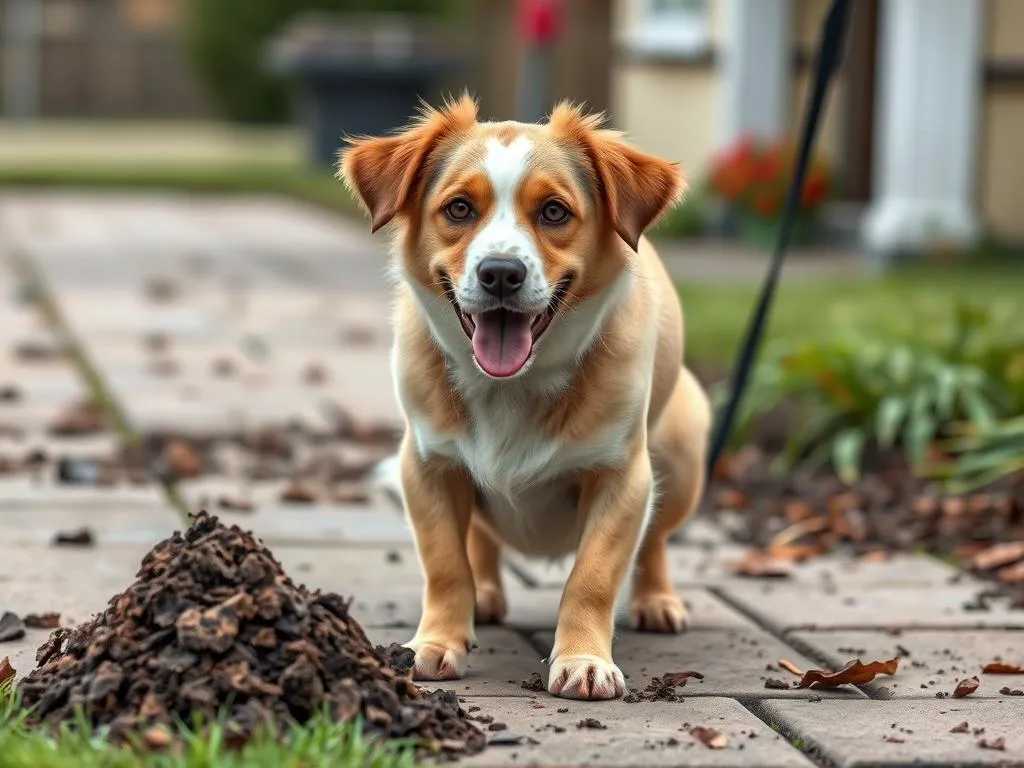
Introduction
Taking care of our dogs involves understanding their health needs, including their bathroom habits. One common issue that many dog owners face is when their dog won’t poop outside. This behavior can stem from various underlying causes, and addressing it promptly is essential for your dog’s overall health and happiness. In this article, we’ll explore the reasons why your dog might be avoiding outdoor bathroom breaks, signs of potential health issues, and practical solutions to encourage your furry friend to do their business outside.
Understanding the Issue
Why Dogs May Refuse to Poop Outside
There can be multiple reasons why a dog won’t poop outside. Understanding these reasons is the first step toward resolving the issue.
-
Fear or Anxiety: Some dogs may develop a fear of the outdoors due to past traumatic experiences. Loud noises, aggressive animals, or harsh weather conditions can create a negative association with outdoor environments.
-
Environmental Factors: Your dog might be sensitive to their surroundings. Loud noises, unfamiliar smells, or even weather conditions like rain or extreme heat can deter them from wanting to go outside.
-
Medical Issues: If your dog is experiencing discomfort due to constipation or gastrointestinal problems, they may avoid pooping outside. It’s crucial to monitor their bathroom habits to identify any potential health concerns.
Common Signs of a Problem
Recognizing the signs that your dog is struggling with outdoor elimination is vital. Look for:
-
Behavioral Changes: If your dog seems restless, whining, or pacing, it may indicate discomfort or anxiety related to their bathroom habits.
-
Changes in Appetite: A decrease in appetite or changes in eating habits can be a sign of stress or health issues.
-
Physical Signs: If your dog is straining to poop or showing signs of discomfort while attempting to relieve themselves, it may be time to investigate further.
Assessing Your Dog’s Health
When to Consult a Veterinarian
If your dog consistently refuses to poop outside, it may be time to consult a veterinarian. Signs that indicate a health issue include:
- Prolonged constipation or diarrhea
- Blood in the stool
- Lethargy or lack of energy
- Loss of appetite
Regular vet check-ups are essential to maintaining your dog’s health and can help catch any underlying issues before they become serious.
Potential Medical Conditions
Several medical conditions could contribute to your dog’s reluctance to poop outside. These include:
-
Gastrointestinal Problems: Issues like irritable bowel syndrome or infections can make outdoor pooping uncomfortable or painful.
-
Parasites: Intestinal parasites can lead to gastrointestinal distress, which may affect your dog’s bathroom habits.
-
Side Effects of Medications: If your dog is on medication, check with your vet to see if gastrointestinal side effects could be the culprit.
Behavioral Factors
The Role of Training
Training plays a crucial role in helping your dog learn appropriate bathroom habits. Potty training is essential for establishing a routine. Using specific cues and commands can also help your dog understand that it’s time to relieve themselves outdoors.
Environmental Enrichment
Creating a safe and comfortable outdoor environment can significantly impact your dog’s willingness to poop outside. Consider:
-
Comfortable Outdoor Space: Ensure that your yard is free of hazards and comfortable for your dog.
-
Reducing Distractions: Limit distractions in the environment, such as loud noises or unfamiliar animals, that may cause anxiety.
Consistency in Routine
Establishing a regular schedule for bathroom breaks can make outdoor pooping a more predictable and comfortable experience for your dog. Consistency breeds familiarity, which can help reduce anxiety.
Positive reinforcement is crucial. When your dog successfully poops outside, provide them with treats and praise to reinforce the behavior.
Practical Solutions
Encouraging Outdoor Pooping
Here are some strategies to entice your dog to go outside to poop:
-
Use of Treats and Praise: Bring along your dog’s favorite treats and offer praise immediately after they successfully relieve themselves outside. This creates a positive association with outdoor bathroom breaks.
-
Routine Walks: Regularly scheduled walks can help signal to your dog that it’s time to do their business outside.
Modifying the Outdoor Experience
Creating a designated bathroom area can help your dog understand where they’re supposed to go. Consider:
-
Designated Bathroom Area: Choose a specific spot in your yard for your dog to use as a bathroom. This can help them associate that area with relieving themselves.
-
Making Outdoor Time Appealing: Incorporate playtime or walks into your dog’s outdoor experience to make it more enjoyable, encouraging them to feel more comfortable.
Gradual Exposure Techniques
For dogs that are anxious about going outside, gradual exposure can help:
-
Desensitization Methods: Slowly introduce your dog to outdoor environments. Start with short, positive sessions and gradually increase the duration as your dog becomes more comfortable.
-
Short, Positive Outdoor Sessions: Spend time outside with your dog, engaging in activities they enjoy. This positive reinforcement can help alleviate anxiety associated with outdoor bathroom breaks.
Training and Behavior Modification
Positive Reinforcement Techniques
Positive reinforcement is one of the most effective training methods. When your dog poops outside, reward them immediately with treats or praise. This builds a strong association between outdoor elimination and positive outcomes.
Professional Training Help
Sometimes, despite your best efforts, your dog may continue to refuse to poop outside. In such cases, seeking help from a professional dog trainer may be beneficial. A trainer can provide tailored guidance and strategies to address persistent issues.
Behavioral therapy can also be effective for dogs struggling with anxiety or fear related to outdoor spaces.
Monitoring Progress
Keeping a Journal
Tracking your dog’s bathroom habits and behaviors is essential. Keeping a journal can help you identify patterns and triggers that may be contributing to their reluctance to poop outside.
Adjusting Strategies Based on Observations
As you monitor your dog’s progress, you may need to modify your strategies based on your observations. Understanding that progress takes time is important, and being patient can lead to positive changes.
FAQs
What should I do if my dog hasn’t pooped in a day?
If your dog hasn’t pooped in over 24 hours, it may be a sign of constipation or a more serious issue. Consult your veterinarian for advice.
How can I help my dog with anxiety about pooping outside?
Gradual exposure, creating a comfortable outdoor environment, and positive reinforcement can help ease anxiety in dogs reluctant to poop outside.
Is it normal for my dog to have inconsistent bathroom habits?
Inconsistent bathroom habits can be normal, but if you notice significant changes or signs of distress, it’s best to consult with your veterinarian.
When should I be concerned about my dog’s bathroom habits?
If your dog shows any signs of pain, discomfort, or significant changes in their bathroom habits, it’s important to consult a veterinarian.
Conclusion
Addressing the issue of a dog not pooping outside is crucial for maintaining their health and well-being. By understanding the reasons behind this behavior and implementing practical solutions, dog owners can help their pets feel more comfortable and secure in their outdoor bathroom habits. Remember to be patient and persistent as you work through this challenge. Your efforts will contribute to a happier and healthier life for your furry companion.









